Sharks, killer whales and photography off the beaten path: Conservation photographer Cristina Mittermeier offers tips on diving deep.
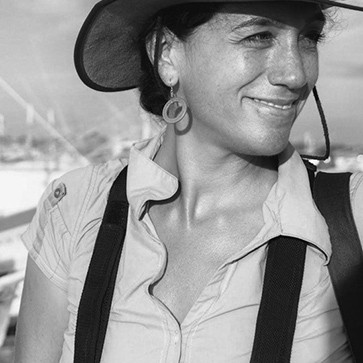
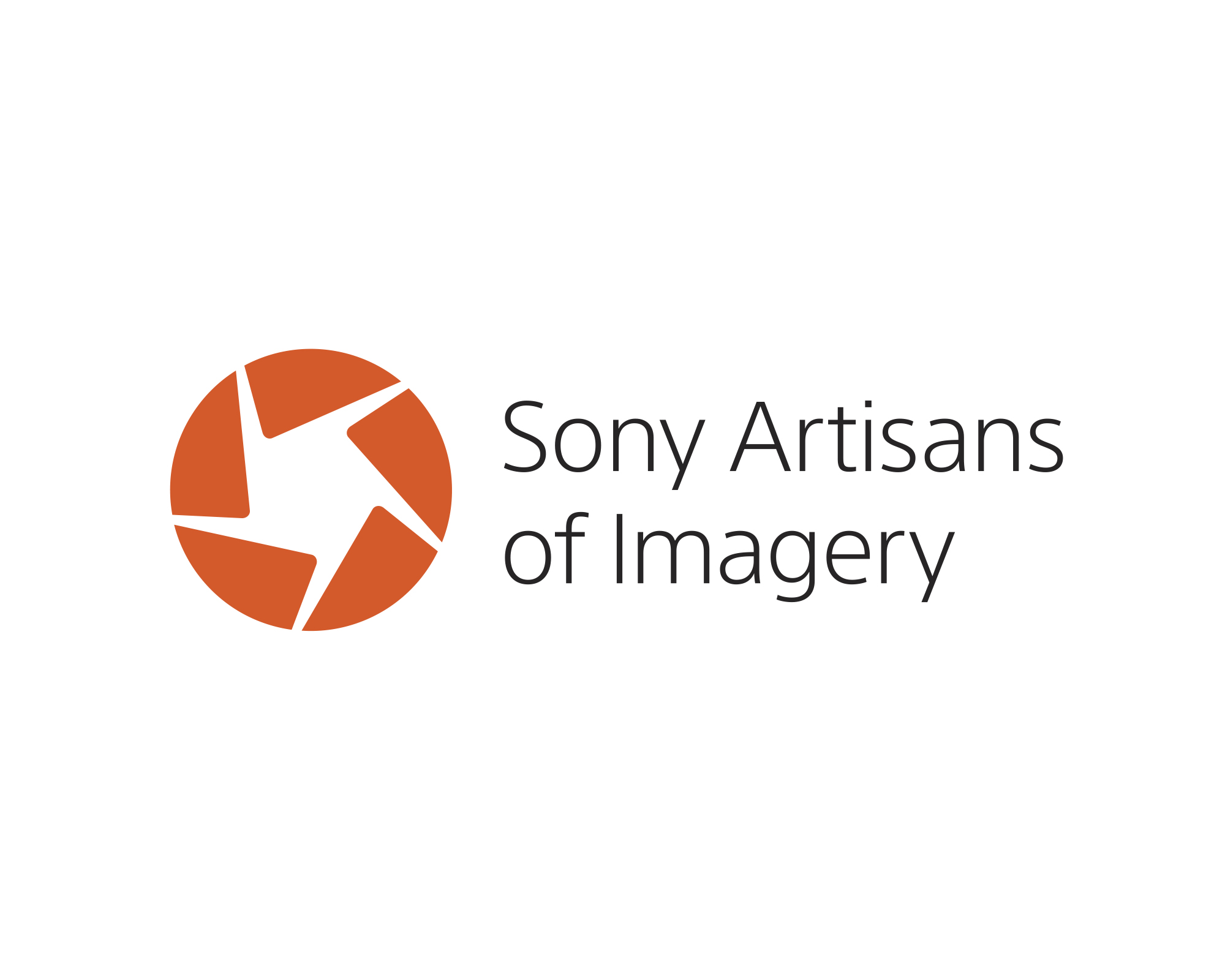
Swimming with sharks and forging through jungles may be the stuff of daydreams for many photographers, but for an adventurous few, such exploits are part of the job. The images they capture not only inspire awe but also inform efforts to conserve our natural world.
To learn more about the work of these photographers, we talked with Cristina Mittermeier, founder of the International League of Conservation Photographers and Sea Legacy, both organizations that support the efforts of image makers who are dedicated to using their craft to promote the conservation and sustainable use of our natural world.
Mittermeier explained how new digital camera sensors have made it possible to capture deep marine environments for the first time, what photographers need to know before they start shooting underwater, and where you can go to dip your toe into underwater image making. She also gave us some tips drawn from her long experience working with indigenous peoples in some of the most remote areas of the world.
Aimee Baldridge: How did you get into conservation photography?
Cristina Mittermeier: I’m a biochemical engineer specializing in marine resources by training. I went to university in Mexico and learned about fisheries and aquaculture and marine biology back in the 1980s. I got a job at Conservation International, which is a very large global foundation dedicated to conservation.
I was doing that job in Mexico City when I met my first husband, Dr. Russell Mittermeier. He happened to be the president of the organization. I moved to Washington, D.C. with him and jumped to the major leagues of conservation very quickly. I spent the next 20 years interacting with global leaders and thinkers in conservation. Thanks to what I learned, today I sit on the boards of several conservation groups, and I’ve published many scientific papers co-authored with other scientists.
At the same time, I started traveling all over the world with my ex-husband. I think I’ve hiked and trekked in almost every jungle on the planet and seen more species of wild monkeys than most primatologists. Because he’s a primatologist and a scientist, he is more of a documentary photographer, and he focuses on taking pictures of specimens. I was carrying his camera for him on these treks to remote places, and I started taking pictures. I soon discovered that images are much more effective to engage audiences than science, so I went back to school, to the Corcoran College for the Arts to learn photography, and I loved it.
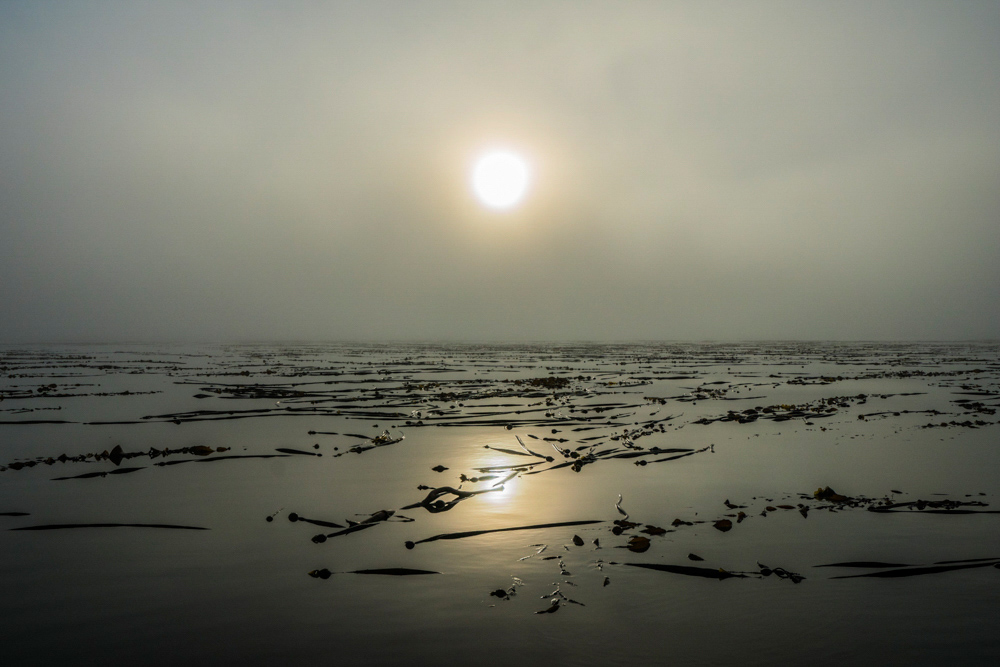
The coast of British Columbia, Canada. Photographed with a Sony a77 II and Sony 16-35mm f/2.8 ZA SSM lens at ISO 400 with an f/10 aperture and 1/1600 second shutter speed. Photo © Cristina Mittermeier.
AB: Tell me about the history of conservation photography and how it’s different from genres like wildlife and nature photography.
Cristina Mittermeier: When I was starting to make pictures, they always had a purpose. And even to this day, photography is just a tool for me, to tell the story of our planet and the struggles that I see. For 99.9 percent of photographers, that’s not a concern. They’re just there to take pictures.
It was just a small handful of people that I started noticing had the same drive and purpose and passion that I did. So I thought, there’s a huge difference between a nature photographer and another photographer who’s willing to do whatever is necessary to make sure that what he’s photographing gets protected. I thought, we need to have our own NGO so we can raise money for our projects and find larger audiences for the issues we're working with. So I set out to create the International League of Conservation Photographers (ILCP) to give those people a platform that they could use to raise money for their projects through a non-profit, and to give them a common voice.
I wrote a paper describing conservation photography and its philosophy, and identifying it as a new discipline within nature photography, and it got published in the International Journal of Wilderness. So that kind of gave it legitimacy. The ILCP is still alive and well. I ran it for seven years, and made it into something that’s really successful. But then it became just a huge administrative chore for me, so I resigned as president and went back to taking pictures.
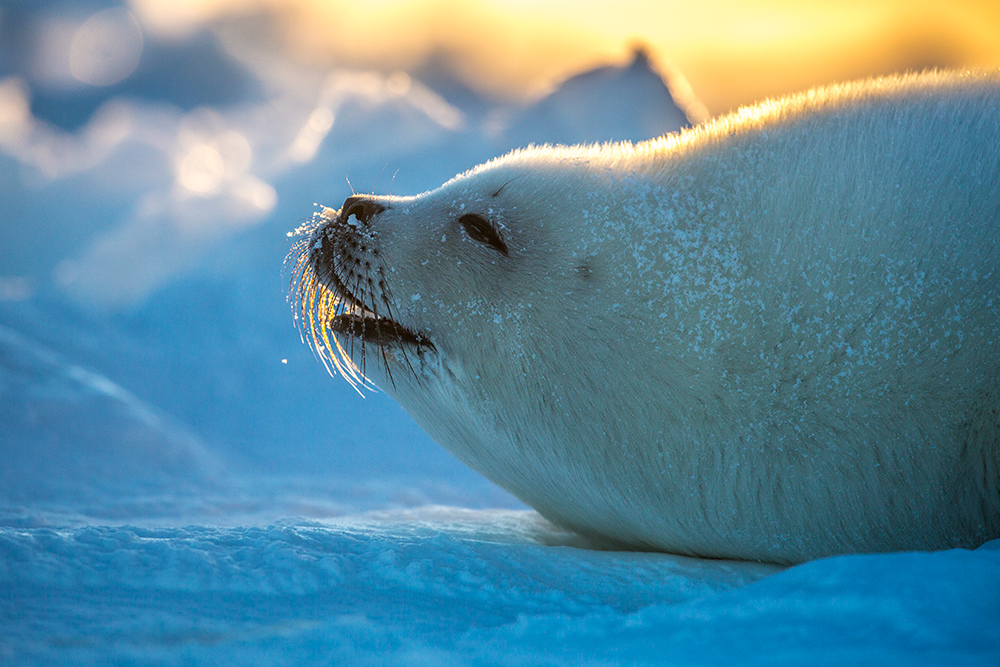
Female harp seals come to the Gulf of St. Lawrence around the Iles de la Madeleine, Quebec, Canada, to have their pups. Photographed with a Sony a7S and Sony FE 70-200mm f/4.0 ZA OSS lens at ISO 400 with an f/6.3 aperture and 1/1600 second shutter speed. Photo © Cristina Mittermeier.
AB: And yet you’ve now started a new organization of photographers, Sea Legacy. Tell me about that.
Cristina Mittermeier: The whole premise of Sea Legacy is that we’re experts at visual communication, and we’re going to be partnering with like-minded organizations that have the same mission that we do—that is, to save the oceans. The ocean is the largest ecosystem on our planet, and three billion people depend on coastal and marine resources.
As photographers, we don’t know what the most important things to conserve are. We need to rely on scientists and scientific organizations to find out where it is that we need to go. So we partner with them, and they provide the science and we provide the images. Working with these conservation groups that are our partners, we’ve identified 50 places that we want to be sending expeditions to, to document marine diversity in the next few years.
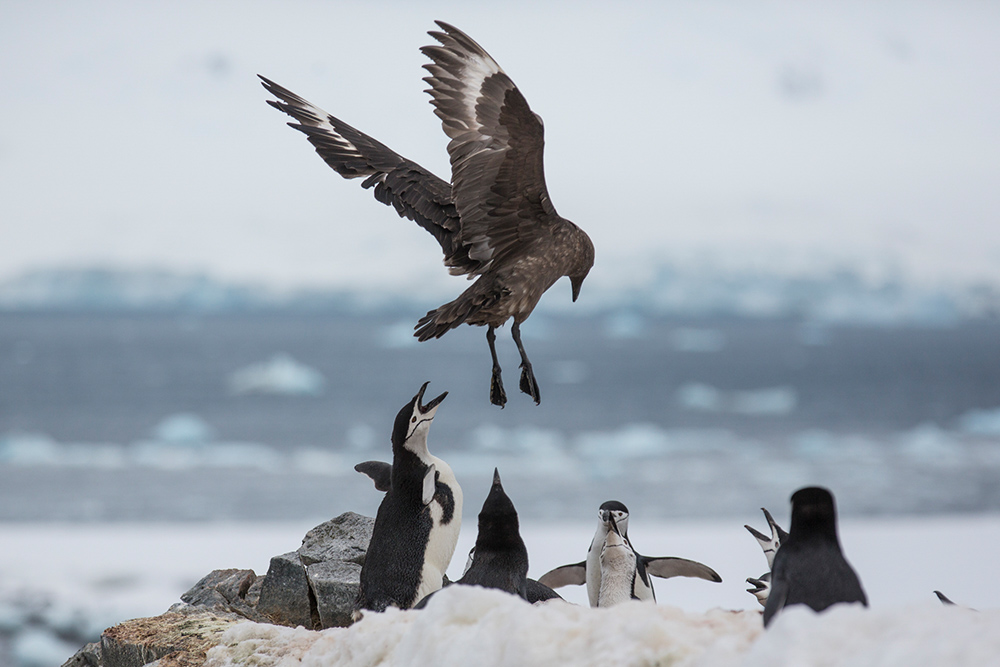
Skua stealing Adelie penguin eggs. Photographed with a Sony a7S and Sony FE 70-200mm f/4.0 ZA OSS lens at ISO 400 with an f/4.5 aperture and 1/8000 second shutter speed. Photo © Cristina Mittermeier.
AB: What are you shooting with underwater?
Cristina Mittermeier: You know, it’s only in the last two or three years that new sensors have allowed us to go into the darkest corners of the ocean, where before it was impossible to photograph, so it’s a very exciting time.
The new cameras that are coming out, especially the a7S II by Sony, have the most incredible sensors for low light. That’s just a game changer for underwater photography. So that’s the gear that I’m planning on using going forward. I also use these incredible underwater lights called Sola lights. They’re 8,000 lumens. I use Nauticam housings, because they make the best underwater systems for Sony cameras.
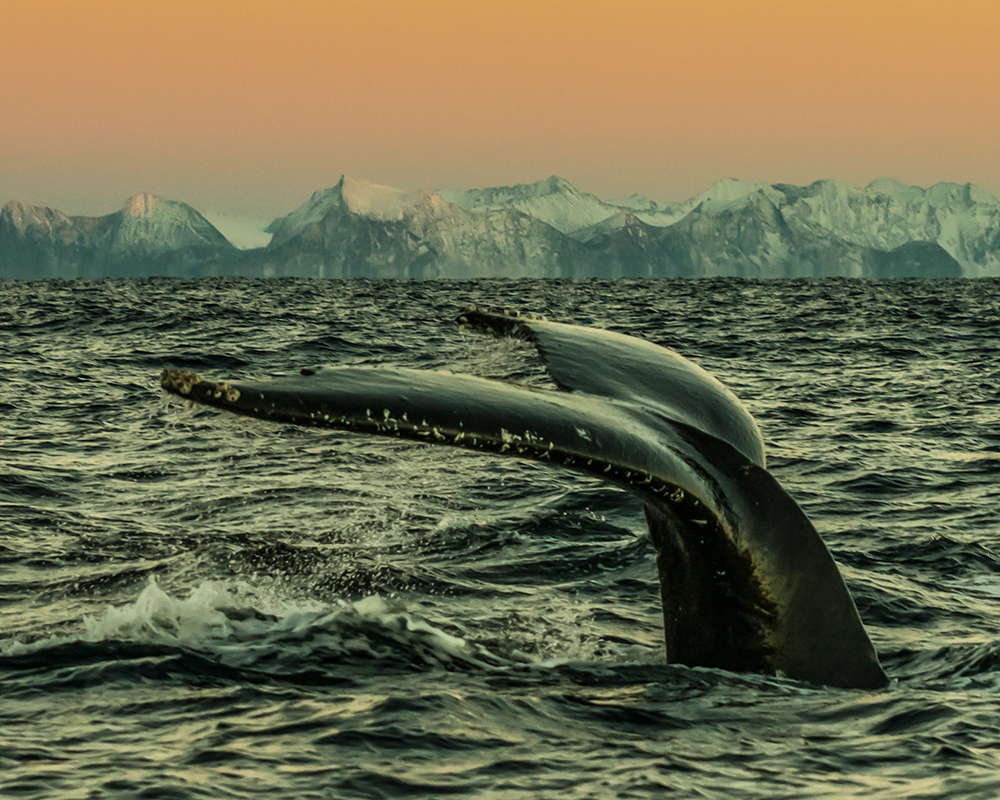
Humpback whale in a fjord near Lofoten, Norway. Photographed with a Sony a7R and Sony 70-200mm f/2.8 G lens at ISO 1250 with an f/5.0 aperture and 1/320 second shutter speed. Photo © Cristina Mittermeier.
AB: How can photographers start shooting underwater safely and make sure they’re not having a negative impact on the environment they’re shooting in?
Cristina Mittermeier: The first thing is that you have to train to be a strong swimmer. SCUBA diving is one of those sports that anybody can do. People who are overweight or in terrible shape can get certified and go SCUBA diving. It’s an incredibly accessible sport for a lot of people. But the way people are trained today is very shallow. You can go and do a one-day resort training and you’re good to go. So I would say that the first thing you need to do is become a really accomplished diver, with training and experience that go above and beyond what the resort schools teach.
And then, learning the basics of photography on land is also an important thing, because when you shoot underwater everything is so much more challenging. You’re dealing not just with the mechanics of photography but with the physics of light going through the water. I can’t understate how difficult it is to master it. My hat goes off to photographers who have been doing it for a long time and who have blazed the trail for the rest of us.
The biggest piece of advice I would have for anybody is to learn how to use your equipment in complete darkness. Lock yourself up in the closet and know exactly where the buttons are and what every button does, because once you're underwater, you need to know instinctively how to change your settings without losing track of your diving situation.
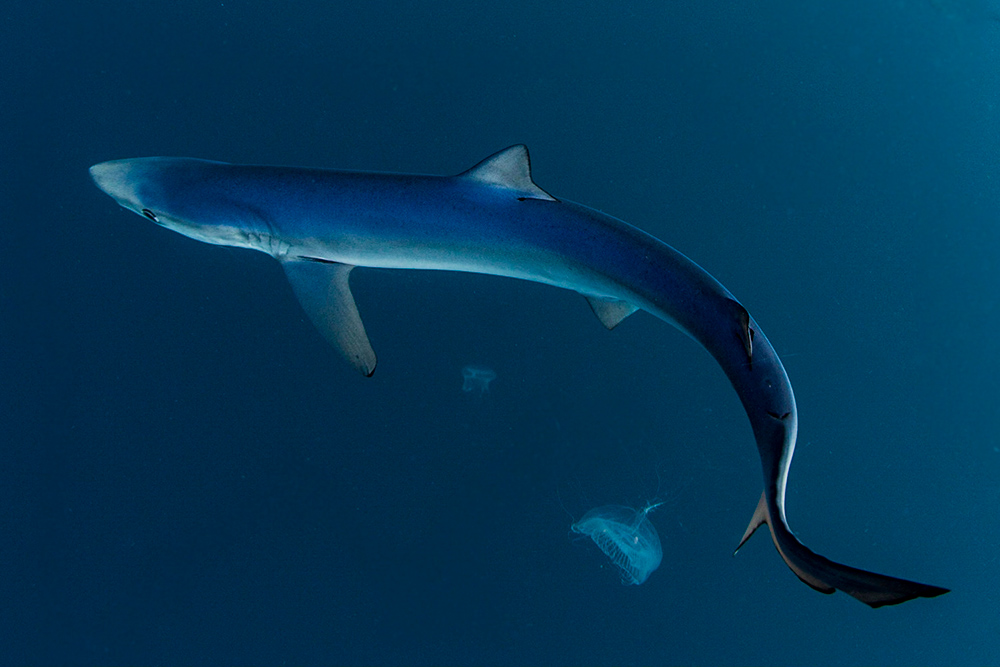
A blue shark off the coast of British Columbia, Canada. Mittermeier photographed it on assignment for National Geographic and Sea Legacy. "This is one of the most beautiful and elegant fish you can hope to encounter," she says. Photographed with a Sony a7S II and Sony 16-35mm f/2.8 ZA SSM lens at ISO 800 with an f/5.6 aperture and 1/640 second shutter speed. Photo © Cristina Mittermeier.
AB: Tell me more about how the physics of light going through water changes what you need to do as a photographer.
Cristina Mittermeier: It’s basically light that gives things their colors. When you start diving, for the first couple meters there’s light and you can still see colors. But the deeper you go, the less light goes into the water. At around 15 feet, everything just looks blue. So one of the most difficult things is to add that color back into the scene by using strobes.
Above water flash photography is very challenging, because you never want the viewer of the image to see that there was a flash used. It has to be subtle. Well, underwater, you’re also trying to move light through water, and the way it behaves is very different. So there’s a lot of guesswork. You also have to be able to adjust the white balance of your camera to underwater conditions.
And then, the front of your camera is a big dome. Every time you breathe or break the surface, tiny bubbles attach themselves to the front of the dome. So you have to remember all the time to clean the dome so that you don’t get bubbles on it.
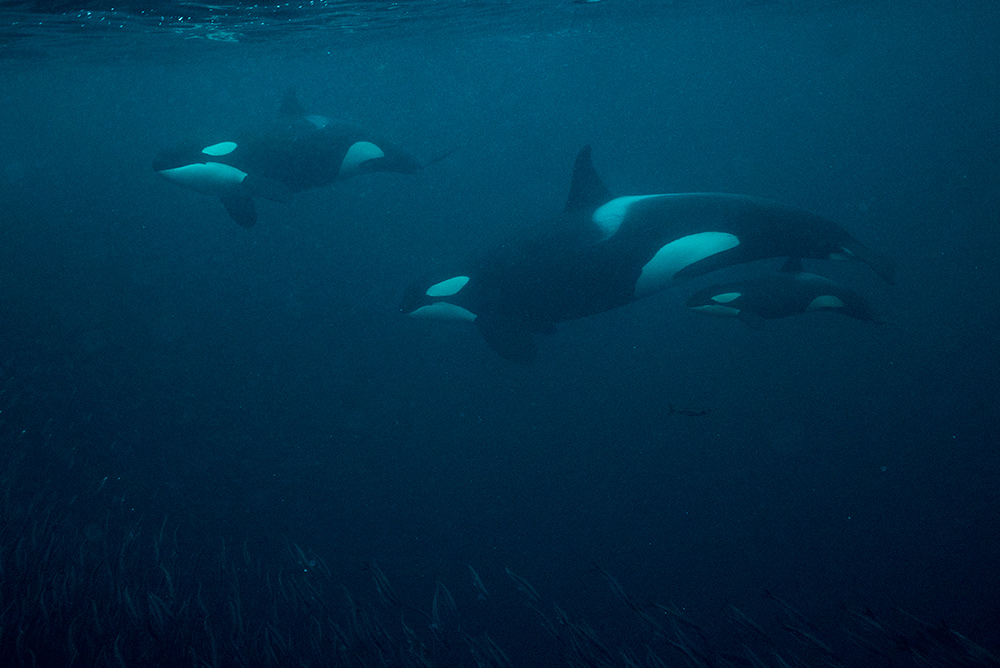
Two female orcas, one flanked by her newborn calf, following large schools of herring in the fjords of northern Norway near Gryllefjord. The fish try to stay where the water is deeper, but the whales push them toward shallow bays and inlets, where they can easily corral them. Orcas travel in family groups, constantly communicating with each other and constantly feeding. Photographed with a Sony a7S II and Sony FE 16-35mm f/4 ZA OSS lens at ISO 3200 with an f/6.3 aperture and 1/60 second shutter speed. Photo © Cristina Mittermeier.
AB: How do you use your viewfinder and control focus underwater?
Cristina Mittermeier: When you have a mask in front of your eyes, trying to look at a viewfinder becomes a real challenge. A lot of times you’re just guessing. There are underwater housings that you can attach a large monitor to, but every element you add is susceptible to flooding, so it’s more difficult to keep your gear safe underwater when you’re adding monitors and other elements. It’s also super expensive. So you have to learn how to focus underwater.
You really cannot focus automatically, because most automatic systems want to pick up whatever is closest to the camera or whatever is in the center, and there’s a lot of stuff floating around. It’s better to use your manual focus. I have these fins that have white stripes, so the camera can easily see them. If I’m able to focus on my fins, I then assume that my camera is focused to infinity, and anything from 3 feet to infinity will be in focus. I do that at the beginning of my dive and let the camera do the rest. Then I basically try to adjust the power of my strobes so that I’m not burning out whatever subject I’m trying to photograph.
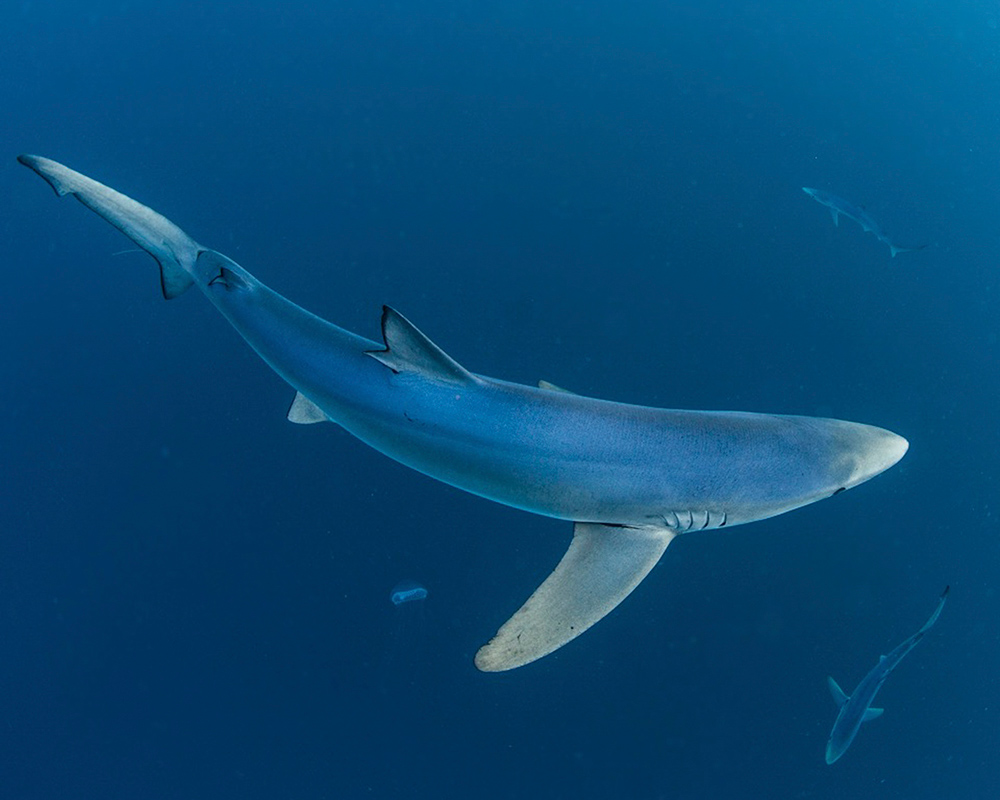
"A flash of electric blue out of the corner of the eye is all the warning you get when a blue shark first approaches you," says Mittermeier. She photographed these off the coast of British Columbia, Canada, on assignment for National Geographic and Sea Legacy. Photographed with a Sony a77 II and Sony 16-35mm f/2.8 ZA SSM lens at ISO 800 with an f/5.6 aperture and 1/640 second shutter speed. Photo © Cristina Mittermeier.
AB: Where would you recommend beginners go to dip their toe in underwater photography?
Cristina Mittermeier: Go to places where the water is calm and clear, and where there’s wildlife to photograph. There are many such places, for example in the Mexican Caribbean or any of the Caribbean islands. Before starting to take pictures, focus on great diving skills. Become so comfortable in the water that you forget you have a breathing apparatus on your back. It’s easy to lose control of your breathing device if you don’t know what you’re doing.
I would say that the most successful and enjoyable underwater photography for me has been done with a snorkel. The shallower you can be, the more available light there is from the sun entering the water, so everything is more beautiful and photography is far more successful.
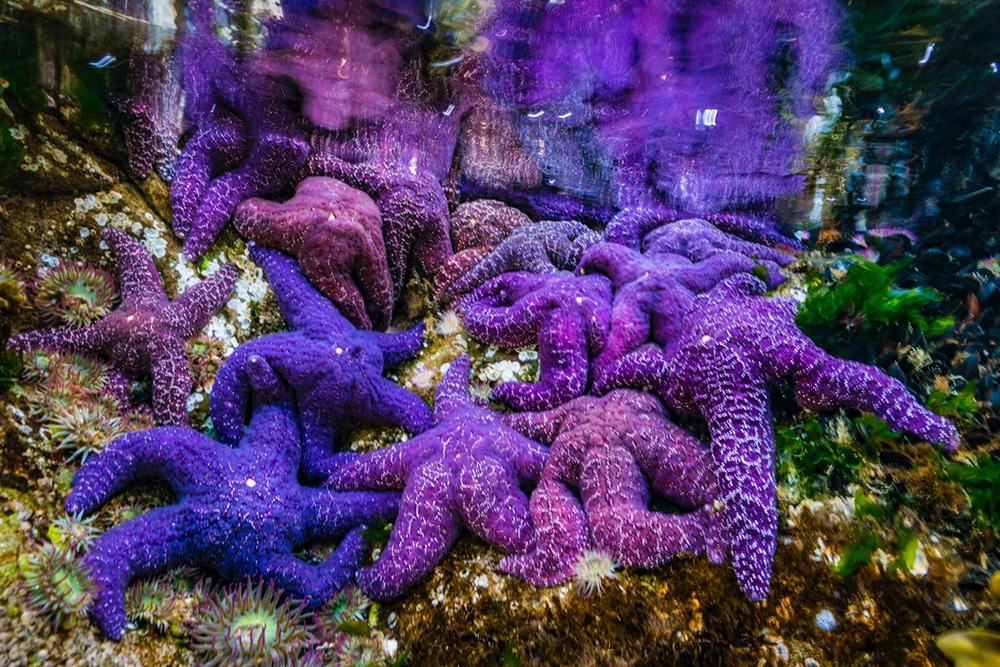
One of the most iconic inhabitants of the nearshore, the Pisaster ochraceus, or "ochre sea star," has long been known as a keystone species necessary for helping maintain healthy biodiversity. From Alaska to Southern California, sea star wasting syndrome has devastated the populations of many species of sea stars. Mittermeier photographed these ochre sea stars on assignment for Sea Legacy. Photographed with a Sony a7S II and Sony 16-35mm f/2.8 ZA SSM lens at ISO 400 with an f/5.6 aperture and 1/120 second shutter speed. Photo © Cristina Mittermeier.
AB: In addition to your images of the natural world, you’ve done a lot of photography of indigenous cultures. That seems even less accessible than underwater photography, but do you think it’s a subject that’s becoming more popular among photographers?
Cristina Mittermeier: Oh, I think so, and it’s very interesting to see. For example, in Africa you can go to Masai villages now that specialize in having tourists come and take photographs of them. I really have a problem with photographers who make indigenous people dress up in a way they’re not normally dressed, just to have their photograph taken. It feels like you’re photographing a specimen in a museum instead of photographing another human being.
The fact of the matter is that most indigenous people around the world now have Western influence of one kind or another, but that takes nothing away from their culture, their language, and the fact that they’re indigenous. For me the most interesting thing about people is not to try to romanticize them as I wish they were or maybe as they were a hundred years ago, but to show them as they are today.
If you want to go off the beaten path, there are amazing cultures that are still very accessible in places like Tibet and Guatemala and southern Mexico. Indigenous people are still found readily and easily there.
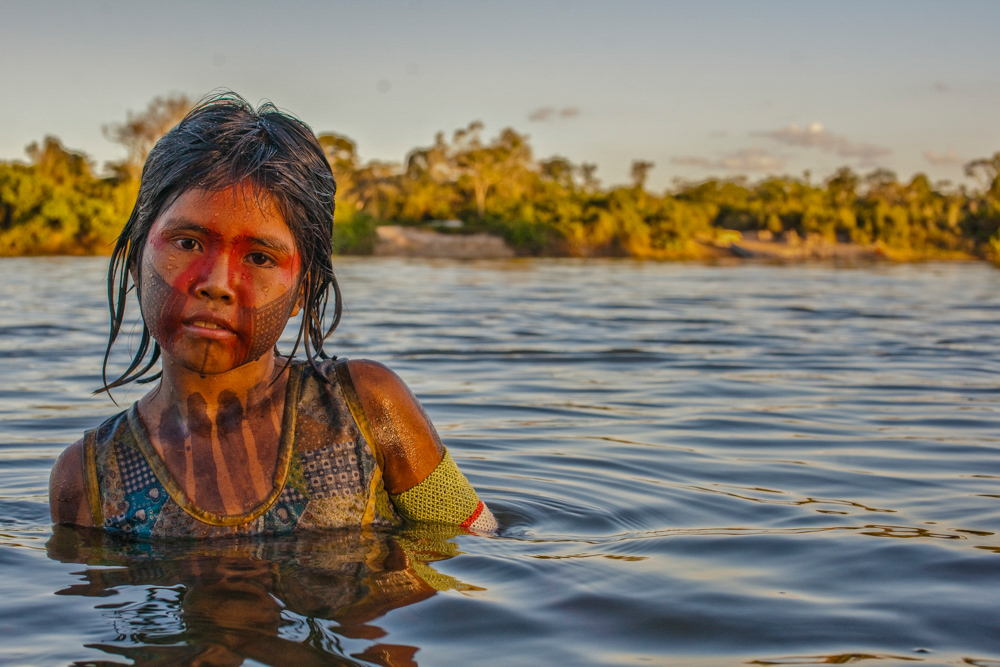
Young Kayapo girl, Amazonia, Brazil. Photographed with a Sony a900 and Sony 50mm f/1.4 lens at ISO 200 with an f/8.0 aperture and 1/125 second shutter speed. Photo © Cristina Mittermeier.
AB: How do you think photographers traveling to places like that can avoid capturing cliched or staged images and instead portray people as they are now?
Cristina Mittermeier: Whether a person is indigenous or not, we’re all human. We all resent it when a stranger points a camera in our face. To get good photographs of indigenous people, you have to treat them in a dignified way and treat them with respect and put in the time to get to know them.
There are so many organizations that work with rural and indigenous communities that the best thing to do is embed yourself with one of them—Habitat for Humanity or one of those organizations doing charity work in remote areas. Go with them, because that’s the best entrée into a community. Go with organizations that are doing conservation or some kind of social work.
A great way to get ready, if you have the opportunity to go to a village and you’re going to be photographing indigenous people, is do a lot of street photography wherever you live. I also find that one of the best training schools is to photograph a wedding. If you can photograph a wedding, you can photograph anything. You have to be working very fast and using all of your lenses and equipment, just to be able to react to things that are happening in front of you.
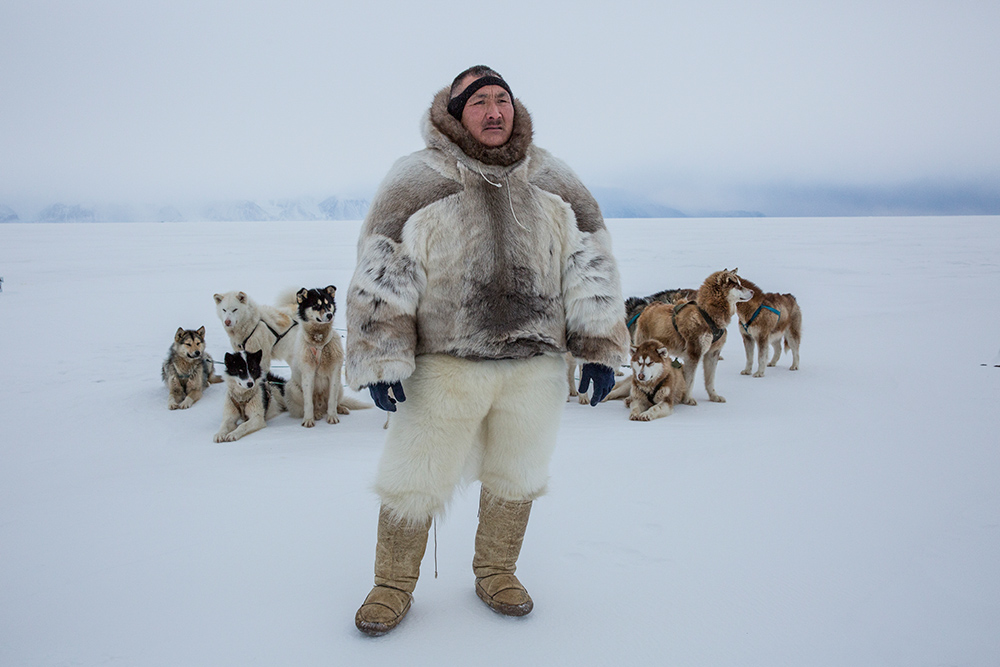
Greenland native Naimanngitsoq Kristiansen with his dog team, northern Greenland. Photographed with a Sony a7S and Sony FE 24-70mm f/2.8 ZA SSM lens at ISO 800 with an f/9.0 aperture and 1/2500 second shutter speed. Photo © Cristina Mittermeier.
AB: What are your favorite lenses?
Cristina Mittermeier: I like to do two things: make portraits of people, and take photographs of people in the environment where they live. One of the things I learned early on in my career that served me really well was what one of my teachers said to me: “It’s all about the little people.” The tiny people in the background of a picture are what give context to your image.
To be able to get those two situations, where you have a beautiful portrait that isolates a person and then a different kind of portrait that’s more about the environment where they’re from, you need at least three lenses. So I always carry with me a 16-35mm—16mm is too wide to photograph most people, because it tends to distort, so you want to keep it around 20mm to 24mm. And then my favorite lens, my go-to lens, is the 24-70mm that creates very pleasant portraits under most circumstances but allows you to go a little wider. I also carry a 70-200mm or 70-400mm to make the kind of portrait where everything is blurred except for the person that you’re photographing. It makes very beautiful classic portraits.
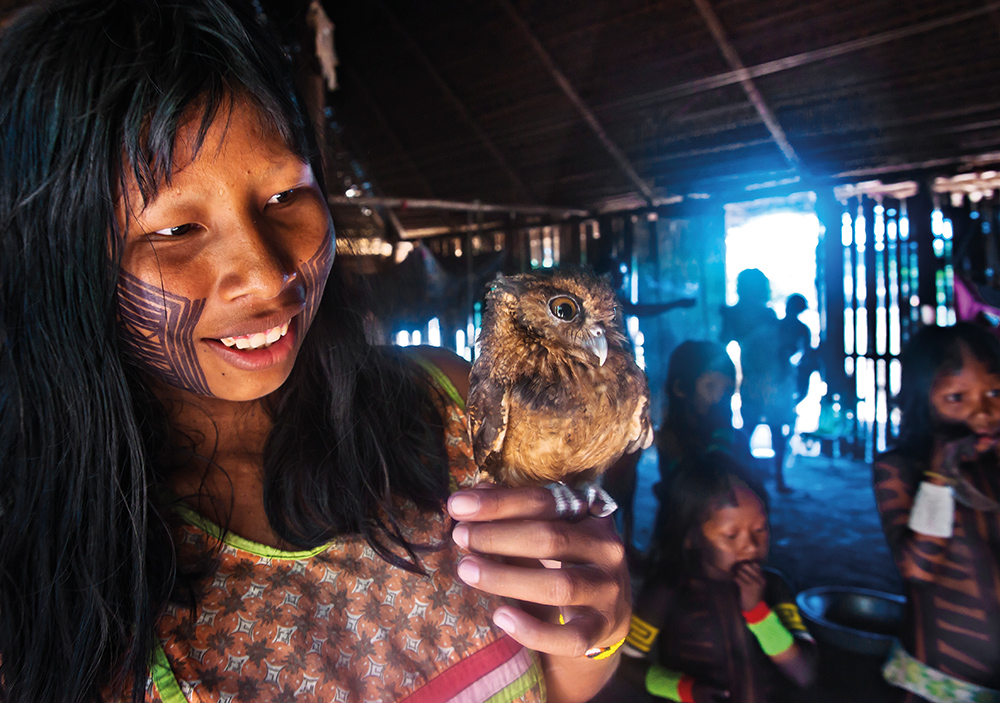
Kayapo girl, Amazonia, Brazil. Photographed with a Sony a900 and Sony 24-70mm f/2.8 ZA SSM lens at ISO 800 with an f/5.6 aperture and 1/8 second shutter speed. Photo © Cristina Mittermeier.
AB: What about showing the relationship between people and the marine environments they live near? That seems like a really difficult subject, because the underwater world and the world above the surface are visually separate.
Cristina Mittermeier: That’s right, and that to me is my next frontier of creativity. I’ve studied a lot of photographs from fishing communities around the world, and they’re usually done from above the water. I want to start including the marine environment by using a housing and placing myself from the perspective of the ocean. I think there are a lot of opportunities to do that. There are marvelous fishing communities all over the world.
As a diver, you often find that when you’re just under the surface of the water, there’s a thin blue line that separates what’s above from what’s below, and it’s so different. Seeing a person on a boat and seeing what he’s targeting below the water, for example. I expect it’s going to be really difficult, because you need very clear water to achieve good results. But that’s where I want to take my photography next, to start showing the relationship between humans and the ocean, and try to do it in a creative, different way.
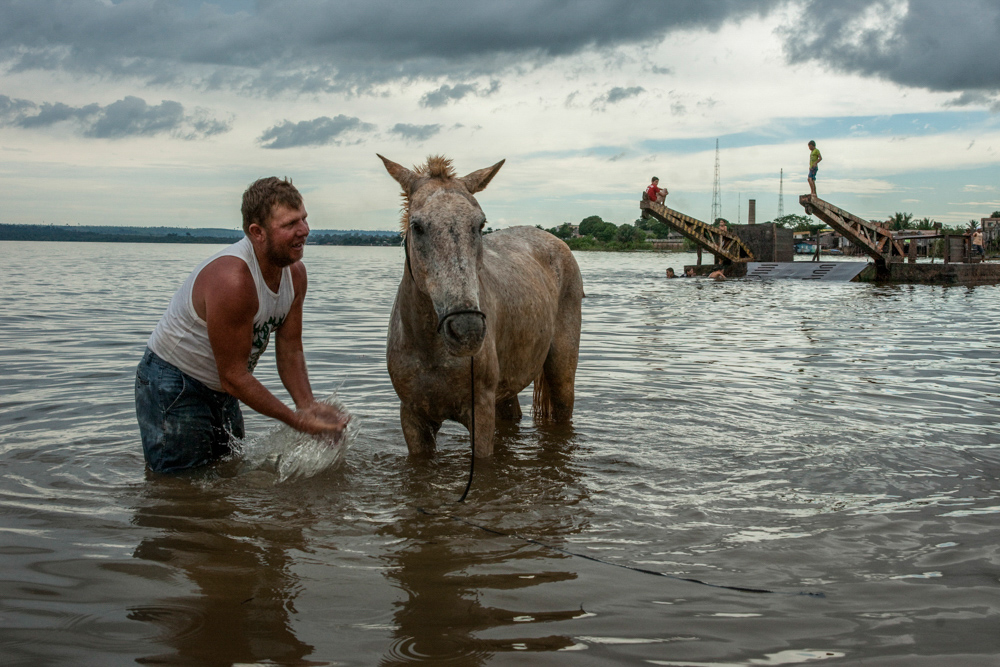
The impacts of the Belo Monte Dam, Amazonia, Brazil. Photographed with a Sony a900 and Sony 24-70mm f/2.8 ZA SSM lens at ISO 400 with an f/9.0 aperture and 1/250 second shutter speed. Photo © Cristina Mittermeier.
This interview was made possible by support from Sony's Artisans of Imagery program. For more about Cristina Mittermeier, visit her website or find her on Sony's Alpha Universe site.
Want to read more interviews like this one? Check out our other Sony Artisans of Imagery interviews below:
Beat wedding-shoot anxiety: Wedding photography tips from world-class pro Scott Robert Lim
Chasing moonbows: Tips on working with extraordinary light from landscape photographer Don Smith
Fast, far, and wide: Tips for intrepid photographers from adventure sports shooter Gabe Rogel
Background first; the subject can wait: Unusual advice from Nat Geo pro Ira Block
No truth in photography? Photojournalist Ben Lowy on making (not taking) images